11 artists on what it means to be Asian-American
Artists celebrate their experiences of culture and identity with illustrated self portraits, as the United States sees an uptick of violence and prejudice since the coronavirus
.jpg?im=Resize,width=500,aspect=fit,type=normal)
.jpg?im=Resize,width=500,aspect=fit,type=normal)
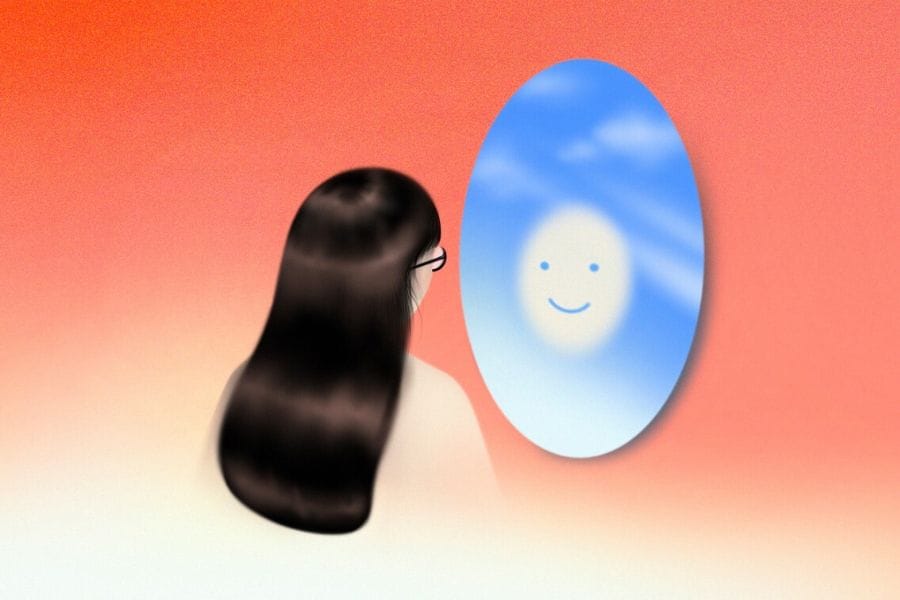
Eleven Asian American artists celebrate their experiences of culture and identity with illustrated self portraits. “My parents are among many other Asian parents who cannot express their feelings/love straight,” Shuhua Xiong writes. (Shuhua Xiong/The New York Times)
Since the coronavirus arrived this spring in the United States, there has been an uptick in acts of violence and prejudice toward Asian Americans. For many, these incidents represent a compounded bigotry: They are wrongly blamed for the virus, and they are lumped together as a single group.
The term “Asian American” masks profound national and cultural differences in the name of representation. We asked 11 illustrators of Asian descent to create a self-portrait, reflecting on their heritage, their stories of immigration and how they identify as an Asian American.
The self-portrait is a complex form of representation. Through facial expression, posture, brush stroke and color, the artist attempts to explore the perception of culture and self. These portraits convey how the artists see themselves and are an interpretation of how they believe they are perceived by others.
Shuhua Xiong: Born in Shanghai to Chinese Parents
“My parents are among many other Asian parents who cannot express their feelings/love straight. Before I grew to understand that, I hardly felt loved. Instead of saying ‘Good job,’ my parents would say sarcastically I could be better. After I grew up and absorbed more American culture, I learned to be more expressive, and I started to appreciate my parents’ subtlety of expressing love. It’s quiet but it’s stronger.”
Gabrielle Widjaja: American Born to Chinese Indonesian Parents
“My Asian American experience is defined by memorizing the lyrics to Jay Chou songs without knowing their translations and learning how to play Mahjong, because my Mandarin proficiency starts at Chinese numbers and stops at cardinal directions. The exciting part is that one’s relationship to culture is never clearly defined. It ebbs and flows it is constantly evolving.”
.jpg)
Eleven Asian American artists celebrate their experiences of culture and identity with illustrated self portraits. “My Asian American experience is defined by memorizing the lyrics to Jay Chou songs without knowing their translations, and learning how to play mahjong, because my Mandarin proficiency starts at Chinese numbers and stops at cardinal directions,” Gabrielle Widjaja. writes. (Gabrielle Widjaja/The New York Times)
Sally Deng: American Born to Chinese Parents
“Like many children of immigrants, I was taught the value of good work ethics by watching my parents toil and overcome endless hardships. I believe I am celebrating my Asian American culture and honoring my parents as well.”
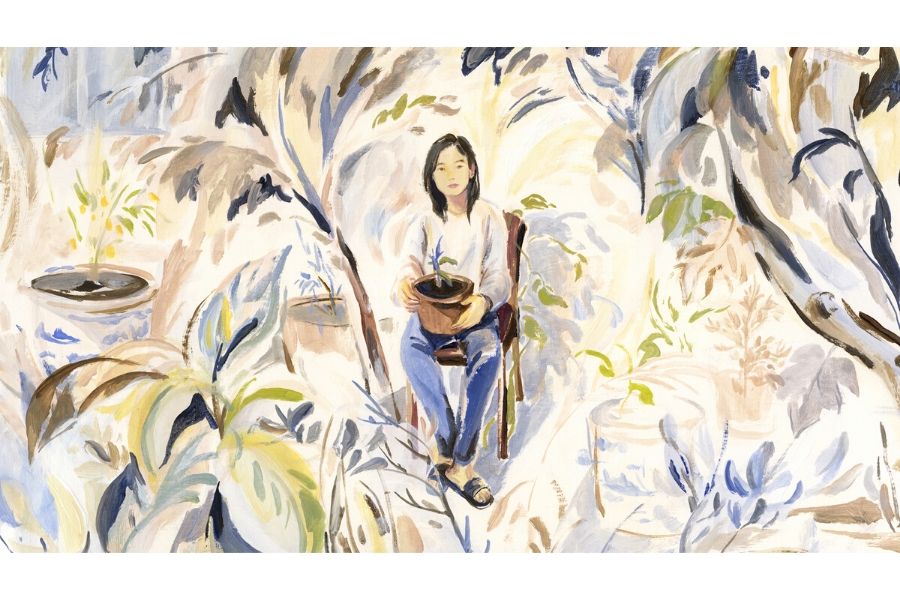 Eleven Asian American artists celebrate their experiences of culture and identity with illustrated self portraits. “Like many children of immigrants, I was taught the value of good work ethics by watching my parents toil and overcome endless hardships,” Sally Deng writes. (Sally Deng/The New York Times)
Eleven Asian American artists celebrate their experiences of culture and identity with illustrated self portraits. “Like many children of immigrants, I was taught the value of good work ethics by watching my parents toil and overcome endless hardships,” Sally Deng writes. (Sally Deng/The New York Times)
Joan Wong: American Born to Hong Kong Parents
“Public school was my first exposure to Western customs. I learned English in school and spoke Cantonese at home. I ate cafeteria PB&J for lunch and rice for dinner. I don’t remember a time where the duality of my identity was not on my mind. I felt a stronger desire to return to my roots. It’s a shift I’ve witnessed not only in myself but in Asian Americans as a whole. In the last couple of years we have become more visible and more heard. It has made me feel less alone and injected me with more pride.”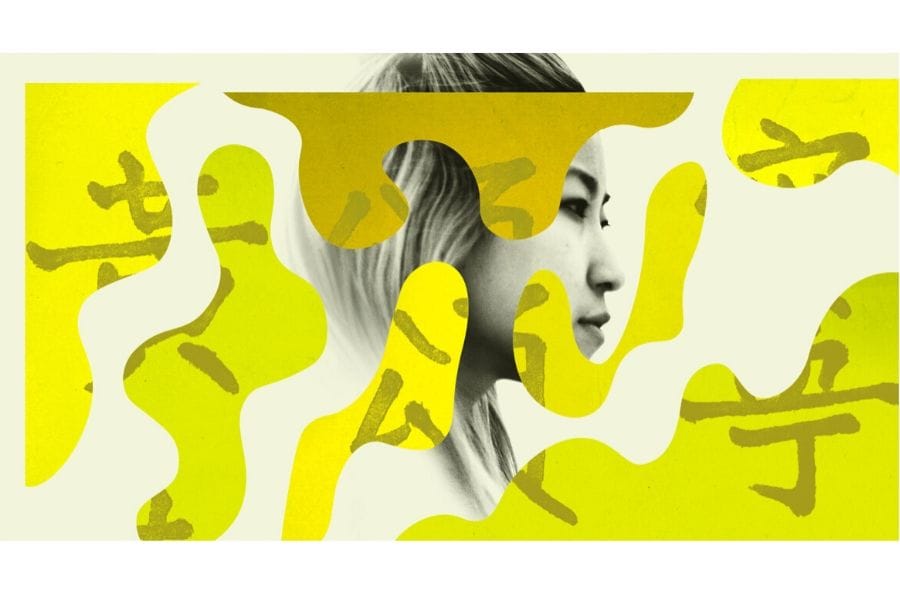 Eleven Asian American artists celebrate their experiences of culture and identity with illustrated self portraits. “Public school was my first exposure to Western customs. I learned English in school and spoke Cantonese at home. I ate cafeteria PB&J for lunch and rice for dinner. I don’t remember a time where the duality of my identity was not on my mind,” Joan Wong writes. (Joan Wong/The New York Times)
Eleven Asian American artists celebrate their experiences of culture and identity with illustrated self portraits. “Public school was my first exposure to Western customs. I learned English in school and spoke Cantonese at home. I ate cafeteria PB&J for lunch and rice for dinner. I don’t remember a time where the duality of my identity was not on my mind,” Joan Wong writes. (Joan Wong/The New York Times)
Hisham Akira Bharoocha: Born in Niigata, Japan, to Japanese Burmese Parents Who Were Immigrants
“I relate well to my Japanese friends who live in the USA because most of us have spent more time here than in Japan, and we have conversations about the cultural adjustments we had to go through. I do use my speaking skills and Japanese manners to make people feel comfortable, but when I do any work-related projects there, I feel comfortable bringing in my Western side by firmly expressing my opinions. The Japanese people who moved here are able to connect to the whole world instead of staying inside a small island culture.”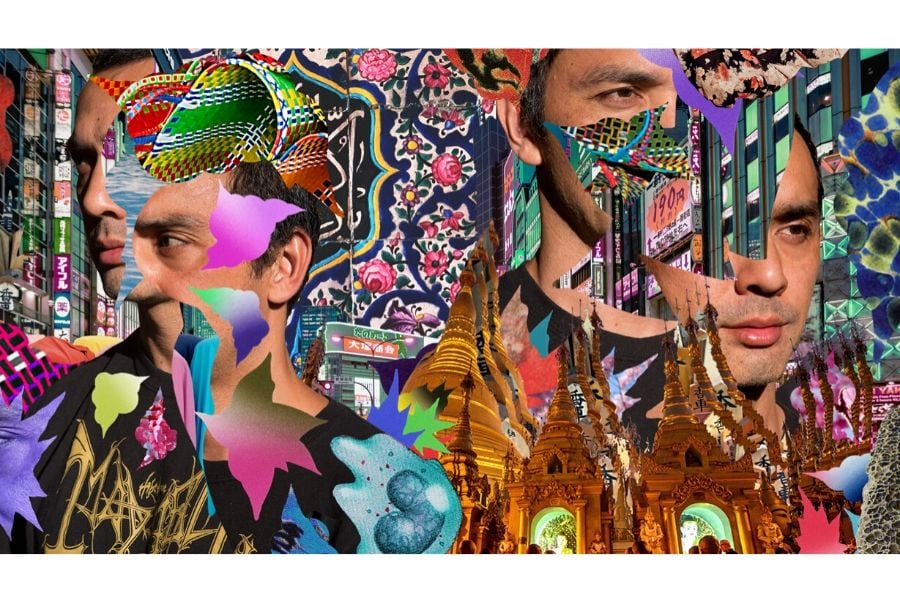 Eleven Asian American artists celebrate their experiences of culture and identity with illustrated self portraits. “I relate well to my Japanese friends who live in the USA because most of us have spent more time here than in Japan, and we have conversations about the cultural adjustments we had to go through,” Hisham Akira Bharoocha writes. (Hisham Akira Bharoocha/The New York Times)
Eleven Asian American artists celebrate their experiences of culture and identity with illustrated self portraits. “I relate well to my Japanese friends who live in the USA because most of us have spent more time here than in Japan, and we have conversations about the cultural adjustments we had to go through,” Hisham Akira Bharoocha writes. (Hisham Akira Bharoocha/The New York Times)
Josh Cochran: Chinese American Born in Oregon Lived in Taiwan
“My mother is Chinese, my father is American. I spent my childhood on the tropical island of Taiwan. Years later, when we moved to the States, I would become obsessed with how others would perceive me. In many ways those memories growing up in Taiwan really formed my identity and left a strong impression on who I am today, even after making my own path all these years later. My identity has become one of the things I’ve thought about my entire life.”
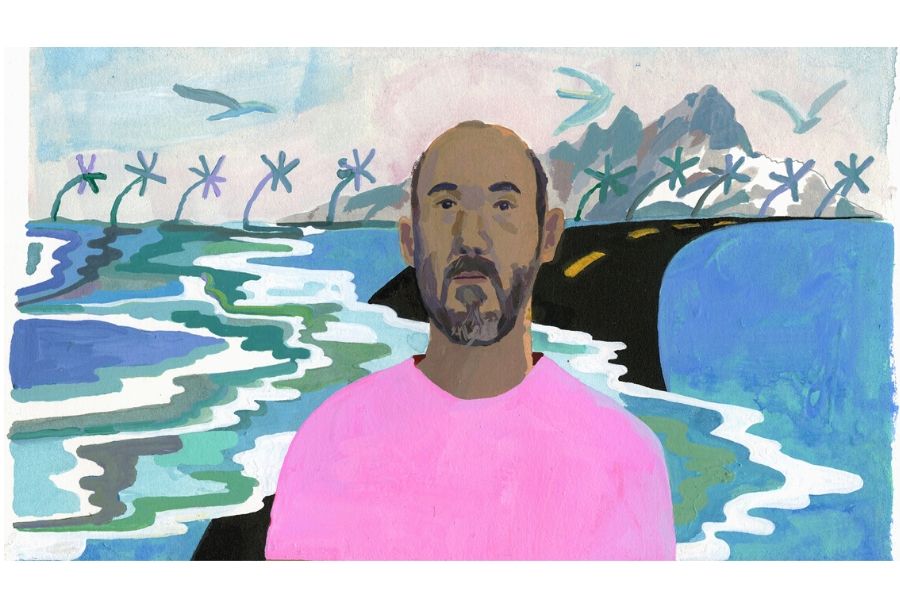 Eleven Asian American artists celebrate their experiences of culture and identity with illustrated self portraits. “In many ways those memories growing up in Taiwan really formed my identity and left a strong impression on who I am today, even after making my own path all these years later. My identity has become one of the things I’ve thought about my entire life,” Josh Cochran writes. (Josh Cochran/The New York Times)
Eleven Asian American artists celebrate their experiences of culture and identity with illustrated self portraits. “In many ways those memories growing up in Taiwan really formed my identity and left a strong impression on who I am today, even after making my own path all these years later. My identity has become one of the things I’ve thought about my entire life,” Josh Cochran writes. (Josh Cochran/The New York Times)
Ruru Kuo: Born in Taiwan
“I want people to know that I’m just a normal girl — nothing different between other American girls and me. We are all girls, humans! I work hard it’s not because I’m Asian, just because I work hard to achieve my goal. I do care how people perceive me, and I want people to know me through my work, not just from my appearance.”
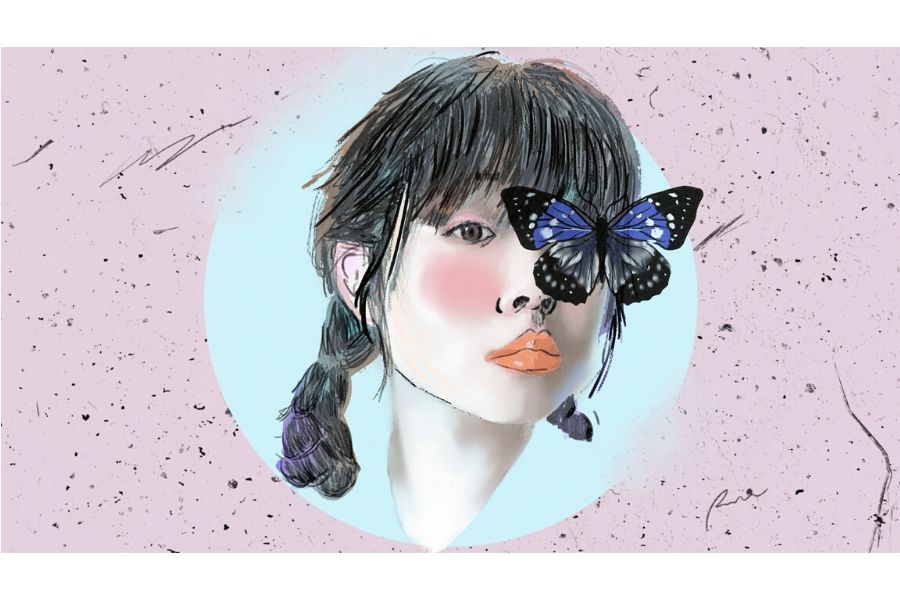 Eleven Asian American artists celebrate their experiences of culture and identity with illustrated self portraits. “I want people to know that I’m just a normal girl, nothing different between other American girls and me," Ruru Kuo writes. (Ruro Kuo/The New York Times)
Eleven Asian American artists celebrate their experiences of culture and identity with illustrated self portraits. “I want people to know that I’m just a normal girl, nothing different between other American girls and me," Ruru Kuo writes. (Ruro Kuo/The New York Times)
Illi Ferandez: American Born to Filipino Parents
“The roots of my experiences have taught me that I wouldn’t be where I am had my parents not left the comforts of home to come here and plant a flag on a small piece of America, just like every other American before them.” Eleven Asian American artists celebrate their experiences of culture and identity with illustrated self portraits. “The roots of my experiences have taught me that I wouldn’t be where I am had my parents not left the comforts of home to come here and plant a flag on a small piece of America, just like every other American before them,” Illi Ferandez writes. (Illi Ferandez/The New York Times)
Eleven Asian American artists celebrate their experiences of culture and identity with illustrated self portraits. “The roots of my experiences have taught me that I wouldn’t be where I am had my parents not left the comforts of home to come here and plant a flag on a small piece of America, just like every other American before them,” Illi Ferandez writes. (Illi Ferandez/The New York Times)
Dan-ah Kim: Born in Seoul, South Korea, to Korean Parents
“Being an immigrant kid came with certain challenges, but I think about how easy I have it compared to my parents. I was grateful to have access to two languages, to know different cultures. Even if it made the journey tougher, my world was bigger for it.”
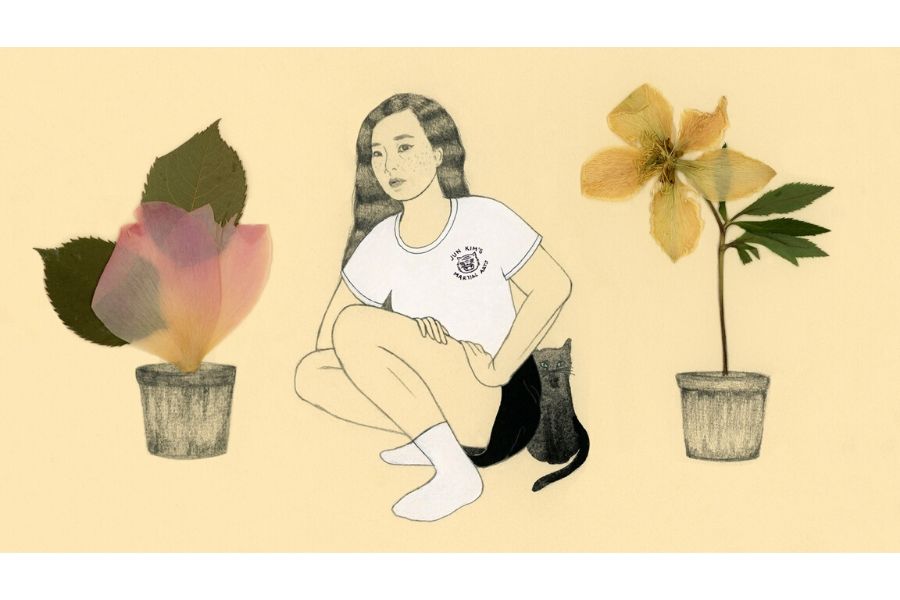 Eleven Asian American artists celebrate their experiences of culture and identity with illustrated self portraits. “Being an immigrant kid came with certain challenges, but I think about how easy I have it compared to my parents,” Dan-Ah Kim writes. (Dan-ah Kim/The New York Times)
Eleven Asian American artists celebrate their experiences of culture and identity with illustrated self portraits. “Being an immigrant kid came with certain challenges, but I think about how easy I have it compared to my parents,” Dan-Ah Kim writes. (Dan-ah Kim/The New York Times)
Matt Huynh: Born in Australia to Vietnamese Parents and Migrated to the U.S.
“When I encounter specific and authentic examples of my family’s culture as Vietnamese and migrants in my life today, it feels both like a homecoming and a vulnerable exposure. As a first-generation Vietnamese Australian in America, I identify and experience the world as a migrant from a family of migrants, living with the far-reaching repercussions of war.” Eleven Asian American artists celebrate their experiences of culture and identity with illustrated self portraits. “As an Asian American, I was constantly attempting to assimilate into communities that would inevitably exclude me,” Dadu Shin writes. (Dadu Shin/The New York Times)
Eleven Asian American artists celebrate their experiences of culture and identity with illustrated self portraits. “As an Asian American, I was constantly attempting to assimilate into communities that would inevitably exclude me,” Dadu Shin writes. (Dadu Shin/The New York Times)
Dadu Shin: Second-Generation American Born to Korean Parents
“As an Asian American, I was constantly attempting to assimilate into communities that would inevitably exclude me. Amongst my white American peers, I would always be a representation of a different culture. To my peers in Korea, I was a foreigner who just happened to look like them. I was a foreigner to them, and they were foreigners to me.”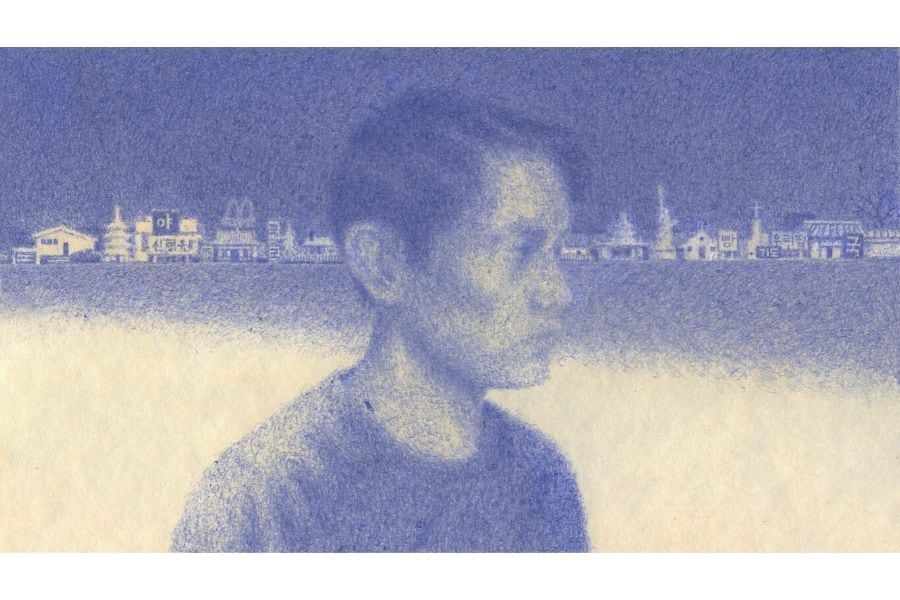 Eleven Asian American artists celebrate their experiences of culture and identity with illustrated self portraits. “As an Asian American, I was constantly attempting to assimilate into communities that would inevitably exclude me,” Dadu Shin writes. (Dadu Shin/The New York Times)
Eleven Asian American artists celebrate their experiences of culture and identity with illustrated self portraits. “As an Asian American, I was constantly attempting to assimilate into communities that would inevitably exclude me,” Dadu Shin writes. (Dadu Shin/The New York Times)
First Published: Jun 13, 2020, 08:22
Subscribe Now